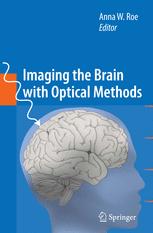

Most ebook files are in PDF format, so you can easily read them using various software such as Foxit Reader or directly on the Google Chrome browser.
Some ebook files are released by publishers in other formats such as .awz, .mobi, .epub, .fb2, etc. You may need to install specific software to read these formats on mobile/PC, such as Calibre.
Please read the tutorial at this link: https://ebookbell.com/faq
We offer FREE conversion to the popular formats you request; however, this may take some time. Therefore, right after payment, please email us, and we will try to provide the service as quickly as possible.
For some exceptional file formats or broken links (if any), please refrain from opening any disputes. Instead, email us first, and we will try to assist within a maximum of 6 hours.
EbookBell Team

0.0
0 reviewsThe technology of detecting and interpreting patterns of reflected light has reached a remarkable degree of maturity that now permits high spatial and temporal resolution visualization at both the systems and cellular levels. There now exist several optical imaging methodologies, based on either hemodynamic changes in nervous tissue or neurally-induced light scattering changes, that can be used to measure ongoing activity in the brain. Imaging the Brain with Optical Methods presents the history of optical imaging and its use in the study of brain function, and the rapidly developing optical technologies and their applications that have recently developed. These
include intrinsic signal optical imaging, near-infrared optical imaging, fast optical imaging based on scattered light, optical imaging with voltage sensitive dyes, and 2 photon imaging of hemodynamic signals.
In total, this volume captures a profile of the current state of optical imaging methodologies and their contribution towards understanding the spatial and temporal organization of cerebral cortical function.
Imaging the Brain with Optical Methods will be highly valuable for researchers and clinicians interested in brain imaging methods and brain function, including advanced undergraduates, and doctoral students, neuroscientists, physicists, psychologists, bioengineers, neurologists, psychiatrists, and neurosurgeons.
About the author:
Dr. Anna W. Roe is a professor of psychology and radiology at Vanderbilt University. She has developed optical methods for studying brain function and specializes in how our brain builds real vs. illusory percepts of the world.